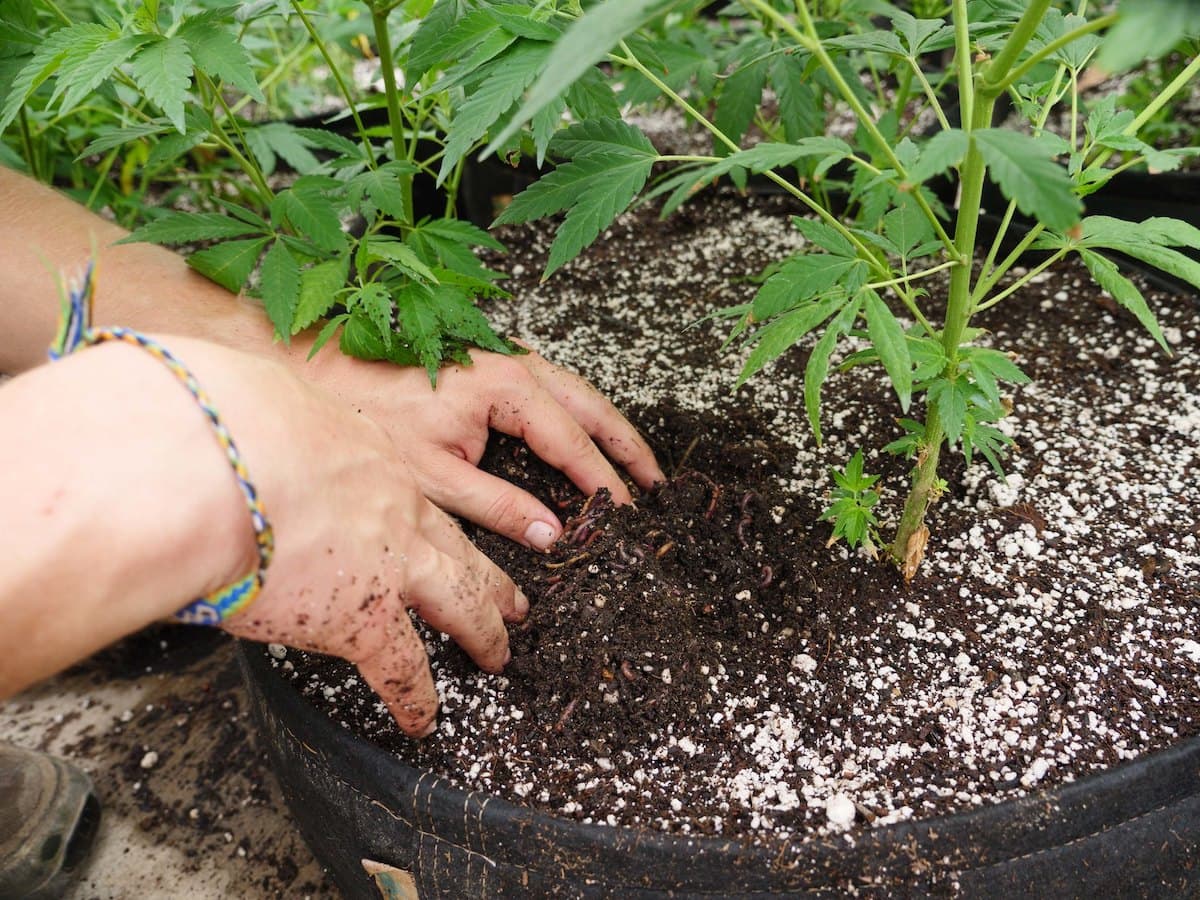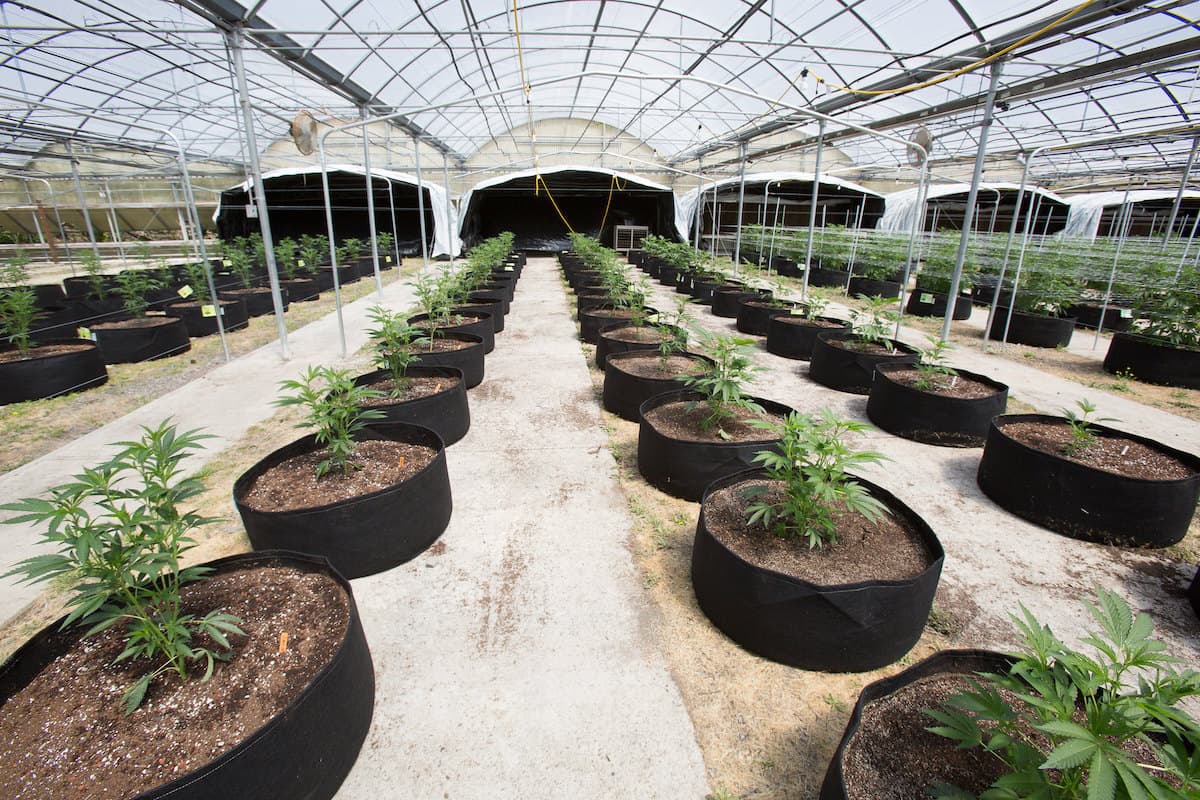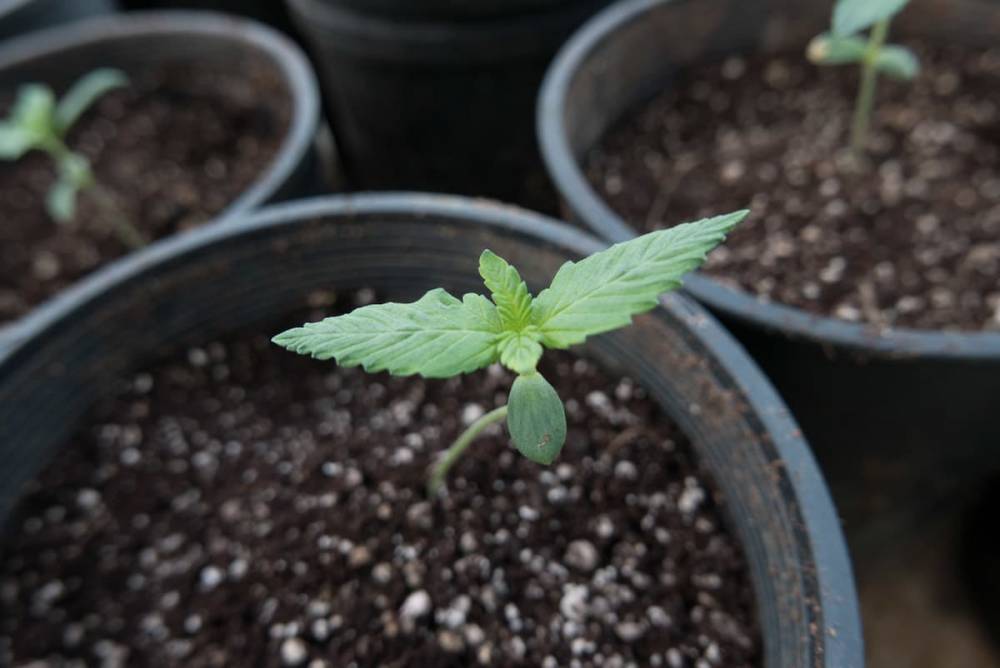By Dante Jordan
If you want to grow some fire outdoor cannabis at the crib, it all starts with the quality of the soil you use. Because if your soil is garbage, so will be your plants’ structure, yield, potency, and overall health.
No one wants that for you, so here are some tips on the best soil preparation when growing cannabis.
What is the best type of soil for growing cannabis?
Choosing the right soil for growing cannabis centers around five qualities: texture, drainage ability, water retention, pH levels, and of course, essential nutrients. A good, light texture promotes the flow of oxygen and nutrients to the roots; drainage keeps water from causing root rot; water retention maintains the necessary moisture for feeding; pH levels manage bacteria and nutrients available to the plant; and obviously, nutrients feed your plants.

There are six main soil types: clay, sandy, silty, peaty, chalky and loamy. Of these, loamy is considered the best suited for most plants, especially cannabis. It is composed of 40% sandy soil, 40% silt, and 20% clay. Loamy soil is ideal for cannabis because it’s fertile, has good drainage, moisture retention, nutrient density, is easy to mold, and heats up quickly, but dries out slowly. *Chef’s kiss*
How do you make the best cannabis super soil mix?
Now, you can run out to a big box store and grab any ol’ soil mix, but creating your own will ensure that your soil has all of the nutrients and minerals needed throughout the entire growth process. Homemade soils take base soil and add certain amendments to create what is known as “super soil,” because it will be absolutely packed with beneficial microorganisms, microbacteria, and essential nutrients.

There are essential macronutrients and micronutrients that cannabis plants need to grow to their full potential. The macronutrients include nitrogen, phosphorus, and potassium; whilst the micronutrients include a laundry list of calcium, magnesium, sulfur, boron, manganese, zinc, copper, iron, and molybdenum.
To bring life to your super soil with all of these nutrients, many growers use soil amendments like cow/horse/sheep manure, worm castings, compost, bat guano, coco coir, vermiculite, and permilite, amongst others. These amendments combine to create a natural soil ecosystem for microorganisms, microbacteria, and essential nutrients that your weed will need to thrive throughout all growing stages.
NOTE: You’ll want to prepare your soil at least six months ahead of planting, so all of the organic matter has time to break down properly, and build the soil’s ecosystem. The good news is once your super soil is created, the overhead to keep it alive and thriving diminishes greatly. All it takes is some regenerative and/or veganic agriculture.
How to practice regenerative farming at home
Regenerative farming is the practice of rebuilding your soil’s health once you pull plants out of it. Post-harvest soil is incredibly depleted of nutrients, which has a negative effect on its biodiversity. This is why farmers create their own worm bins (a colony of worms mixed with compost), do composting, and use cover crops. It’s the art of recycling waste material, while also keeping the soil fertile and nutrients bioavailable year-round. It promotes sustainability, and is a huge money saver too.

Veganic agriculture is essentially all of the preharvest soil making and post-harvest soil management listed above, but without the use of animal byproducts, such as animal manure, bat guano, etc. That means all the soil amendments only come from plant matter like mulch, chopped woods, and green manure, just to name a few. Just like you can be vegan and not eat animal products, so can plants. Vegan nutrition provides plants with the food they’d absorb in their most natural environment.
The use of cover crops is one of the easiest ways to get into regenerative and veganic agriculture. Cover crops keep biodiversity flowing through the soil while you await the return of cannabis grow season. Some great options for at-home cover crops during the winter months are legumes like clover, alfalfa, beans, lentils and peas. Commit to these sustainable farming methods of soil creation and management, and you’re sure to have some high quality, biodiverse, cannabis super soil once Spring returns. Earth thanks you in advance.

